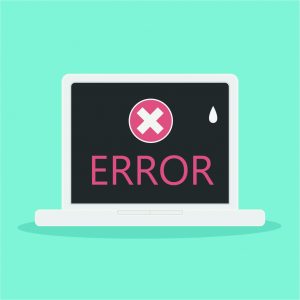 Under the America Invents Act (“AIA”), seemingly minor procedural errors made when filing an application can create a procedural morass that is difficult to correct. At least some divisions at the USPTO appear to recognize procedural pitfalls created by the AIA. For example, the Office of Patent Legal Administration gave a slide presentation in November 2017 entitled “Prosecution Tips and Traps for Patent Applications Examined Under the AIA,” and the very first slide aptly stated, “Filing issues. What could go wrong?”
Under the America Invents Act (“AIA”), seemingly minor procedural errors made when filing an application can create a procedural morass that is difficult to correct. At least some divisions at the USPTO appear to recognize procedural pitfalls created by the AIA. For example, the Office of Patent Legal Administration gave a slide presentation in November 2017 entitled “Prosecution Tips and Traps for Patent Applications Examined Under the AIA,” and the very first slide aptly stated, “Filing issues. What could go wrong?”
An example of “what could go wrong” is if a pre-AIA Application Data Sheet (“ADS”) is inadvertently used when filing an AIA application because the pre-AIA ADS form lacks an “Applicant” field. Before the AIA was enacted, the inventors were the default applicants listed in an ADS. Consequently, if one uses a pre-AIA ADS for an AIA application, the inventors are regarded as the “Applicant” (i.e., the applicant of record). The intended Applicant in this scenario, which in many cases is the Assignee, is then unable to take action in the application or appoint others to take action in the application via a power of attorney without consent from the applicant of record. Nor can the Assignee file a terminal disclaimer to obviate an obviousness-type double patenting rejection over a patent naming a common inventor.
To change the applicant of record to the Assignee in a post AIA application, two documents are required: (1) a corrected ADS, and (2) a statement under 37 C.F.R. § 3.73(c). This seems simple at first glance. To achieve the first objective, a “corrected” ADS must be filed showing the changes to the earlier-filed ADS by underline and strikethrough.[1] But filing a corrected ADS showing mark-ups is more difficult when correcting a pre-AIA ADS filed in an AIA application. For example, the corrected ADS must list the inventors as applicants (because they were the applicants by default in the pre-AIA ADS), but then strike them out and list the Assignee as the Applicant. While this is not an extreme hardship, it is also not as simple as filing a Supplemental ADS, as was done before the AIA became law.
The second requirement to change the Applicant in an AIA application is a statement under 37 C.F.R. § 3.73(c). This statement, however, must be signed by the Assignee or all co-Assignees. In other words, for an Assignee to sign the statement there must be an assignment from the inventors to the Assignee. If there is no assignment, then all of the inventors need to sign the § 3.73(c) statement to update the Applicant to the Assignee in the application.
Acquiring an inventor assignment or signature on the § 3.73(c) statement is normally not difficult, but if there are many inventors (or if any are missing or deceased) this simple task can be much more difficult. Recall that without the § 3.73(c) statement, which needs either the direct signatures of all inventors or a recorded assignment from all inventors, the ADS cannot be corrected to change the Applicant from the inventors to the Assignee. When inventors are missing or deceased, an assignment can still be obtained but it usually requires proof that the inventors were under an obligation to assign to the Assignee. Normally this is done via an employment agreement showing an obligation to assign to the Assignee. But if there is no employment agreement, the assignee may be out of luck as to the missing inventor. For a deceased inventor, there is the option of locating an heir, which may be less desirable.
In addition, if Assignee cannot obtain the right to take action in the application by being named as the Applicant, the Assignee also cannot file necessary papers on behalf of the missing/deceased inventors to comply with the requirement to file an inventor’s Declaration. A patent will not issue without an executed Declaration. When inventors are missing or deceased, the Applicant can at least file the requisite Substitute Statement to comply with the Declaration requirements. But until the Assignee is the Applicant, it cannot do so.
Because obtaining the paperwork for proving the missing/deceased inventors’ obligation to assign to the Assignee can take time, and the clock may be running, an alternative is to file a continuation application using the AIA (i.e., with a correct version of the ADS and naming the assignee as the Applicant). Importantly, however, this does not resolve the assignment issue. Nevertheless, the Assignee will at least be the Applicant and can prosecute the application and file the substitute papers necessary for the Declaration so that a patent can issue.
Although such issues with the assignments existed before the AIA, the above scenario shows that a simple mistake of using the wrong form when filing an application can cause a procedural headache that is time-consuming and costly to correct. One can always hope that the Office will, at a minimum, revive the practice of filing a Supplemental ADS to correct simple errors.
[1] Compare pre-AIA 37 C.F.R. § 1.76(c) (“Supplemental application data sheets”) with AIA 37 C.F.R. § 1.76(c) (“correcting and updating an application data sheet”).






